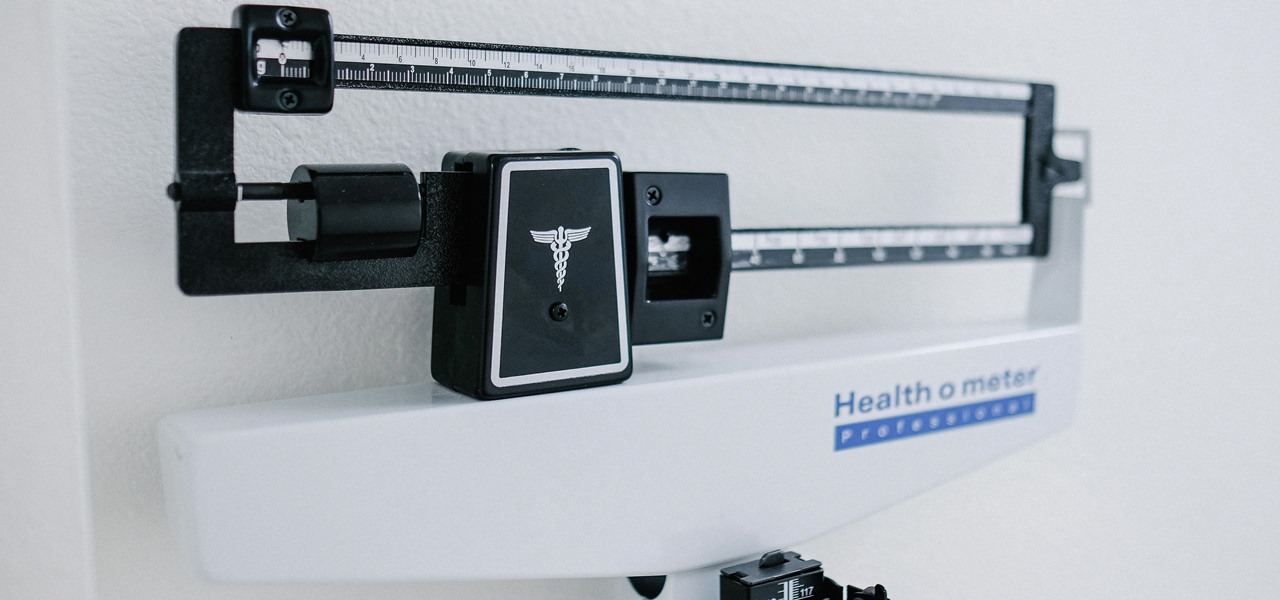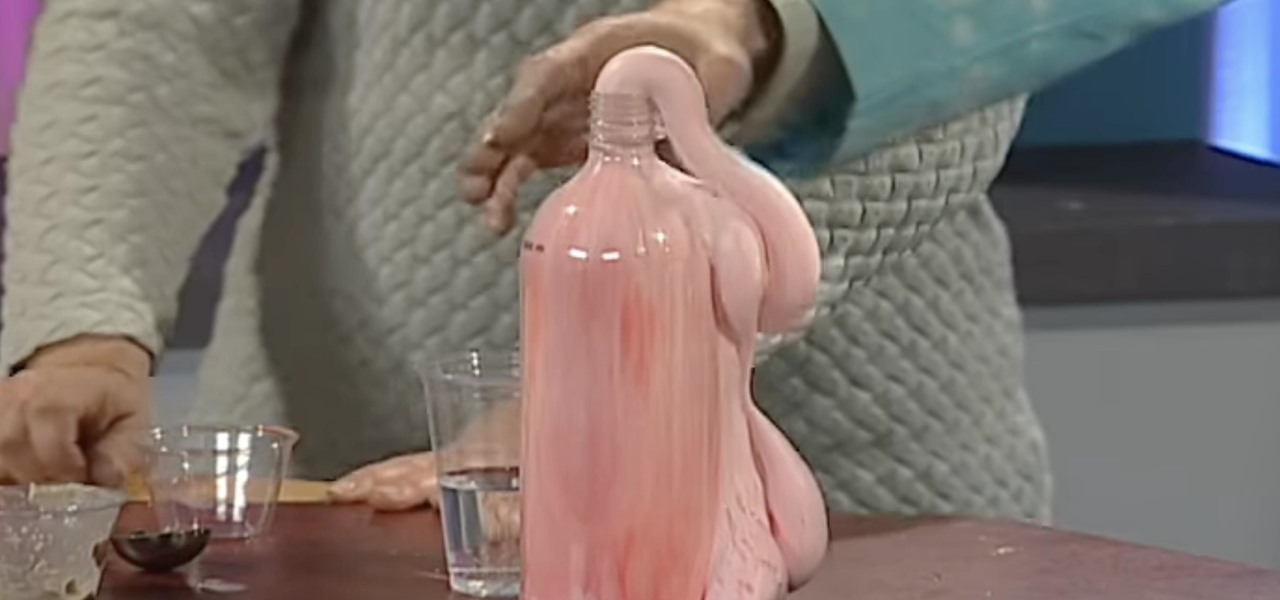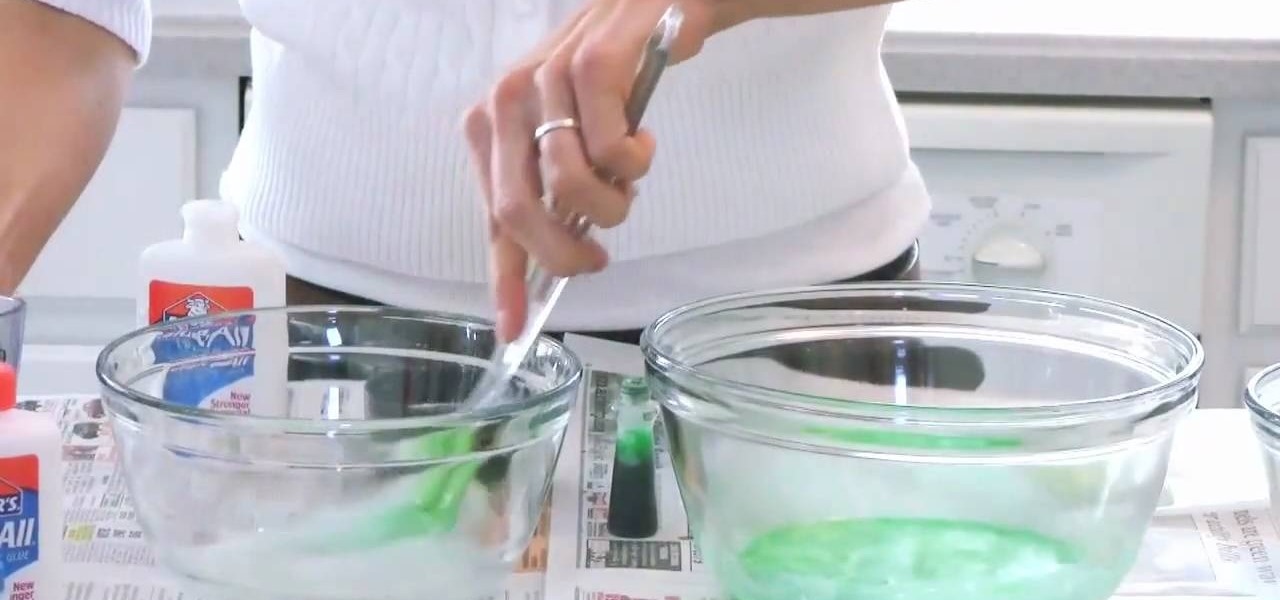Hot Science Experiments Posts

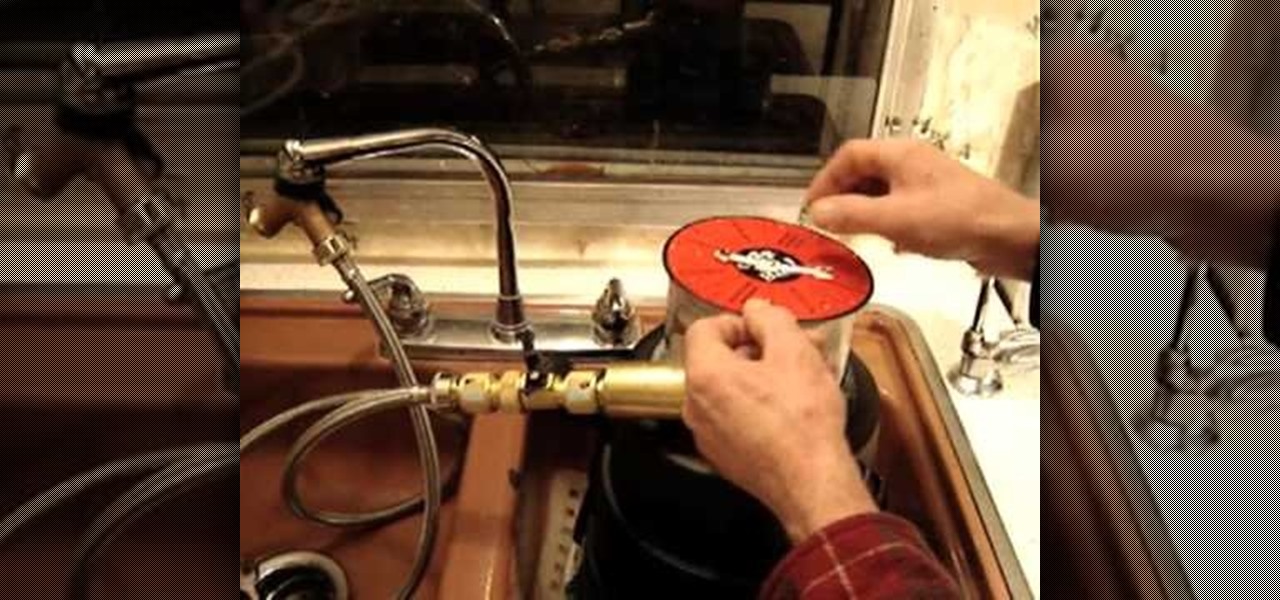
How To: Make holiday decisions with the Tesla CD turbine
The Tesla CD Turbine is a little homemade turbine made from CD's, CD spindle, supermagnets, and glue. It runs on faucet water pressure.
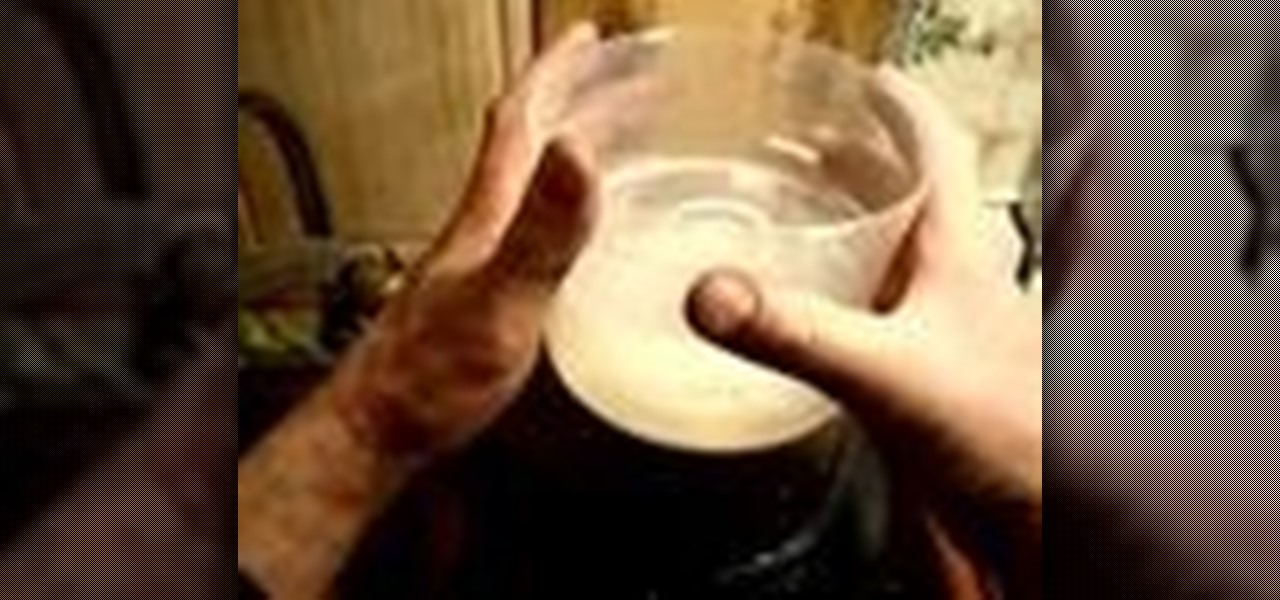
How To: Reverse magnet rotation with a Tesla CD turbine
Balls go flying as MrfixitRick attempts to show how certain conditions cause a magnetic ball to reverse its direction, mysteriously revolving backwards to the rotating magnets of the CD Turbine.
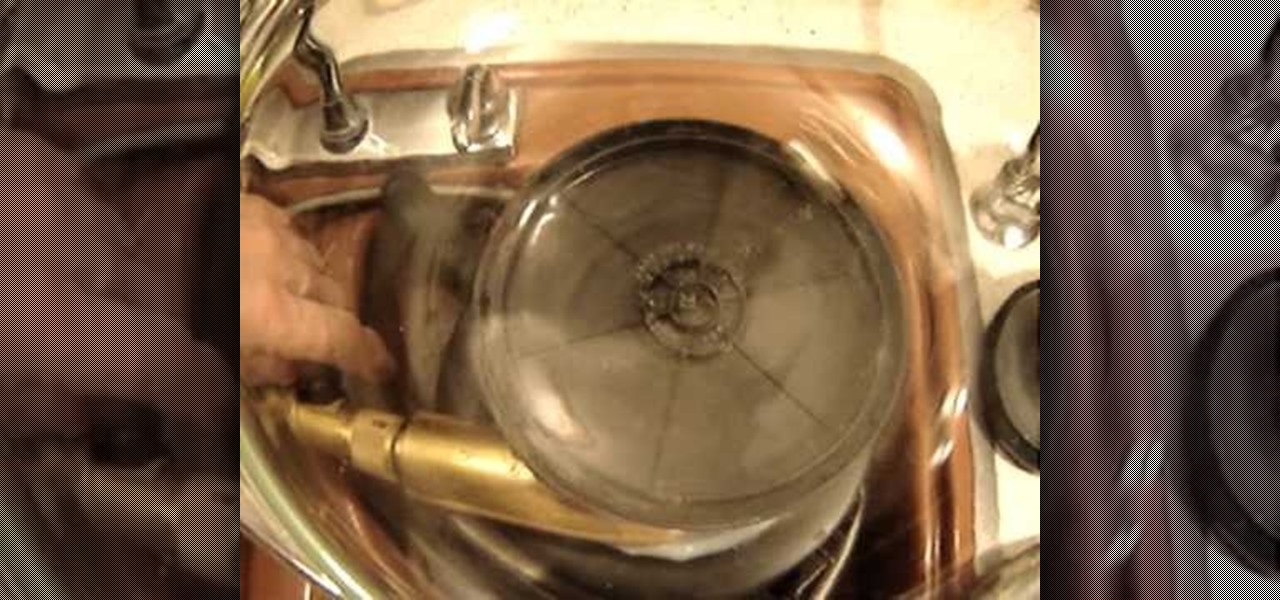
How To: Reverse rotate magnetic balls with a Tesla CD turbine
Unusual magnetic phenomena observations are found here. First, we see a rotating and revolving ball magnet in a pyrex bowl. The revolving was expected; the rotating was not. Is this the same phenomenon as the Earth rotating around it's axis as it revolves around the Sun?
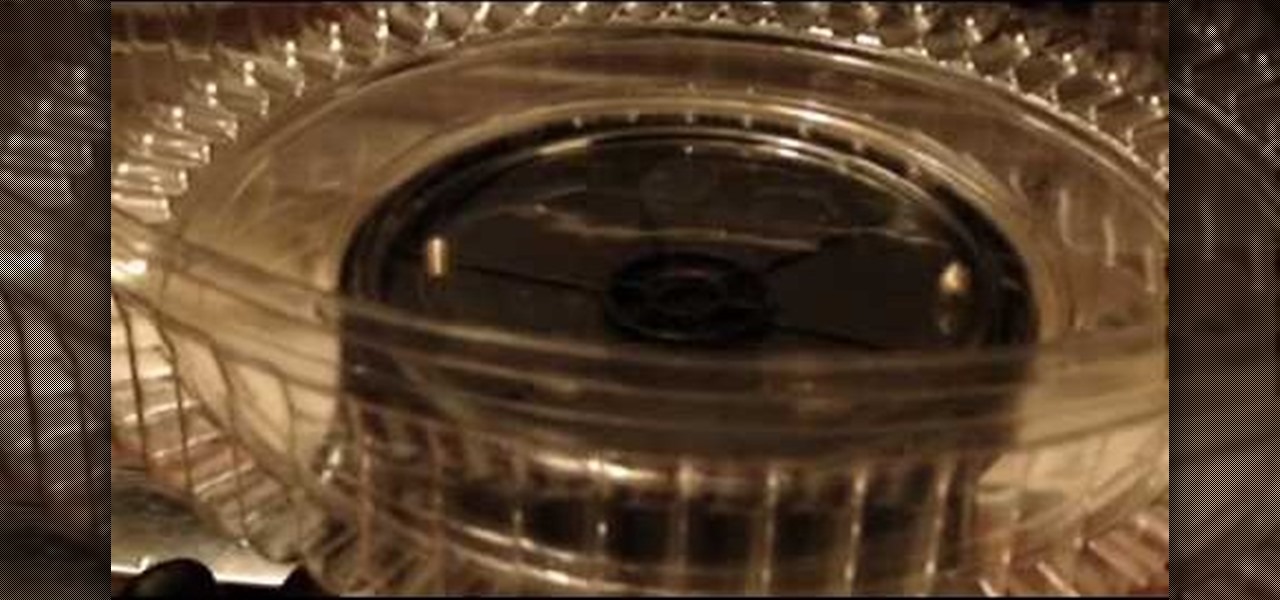
How To: Use magnetic balls with the Tesla CD turbine
The Tesla CD Turbine (the little turbine made from recycled CD's and magnets) is used as a magnetic test bed for this SinkScience experiment. Here, six 3/16 inch diameter neodymium ball magnets are placed in a plastic bowl above the CD Turbine.
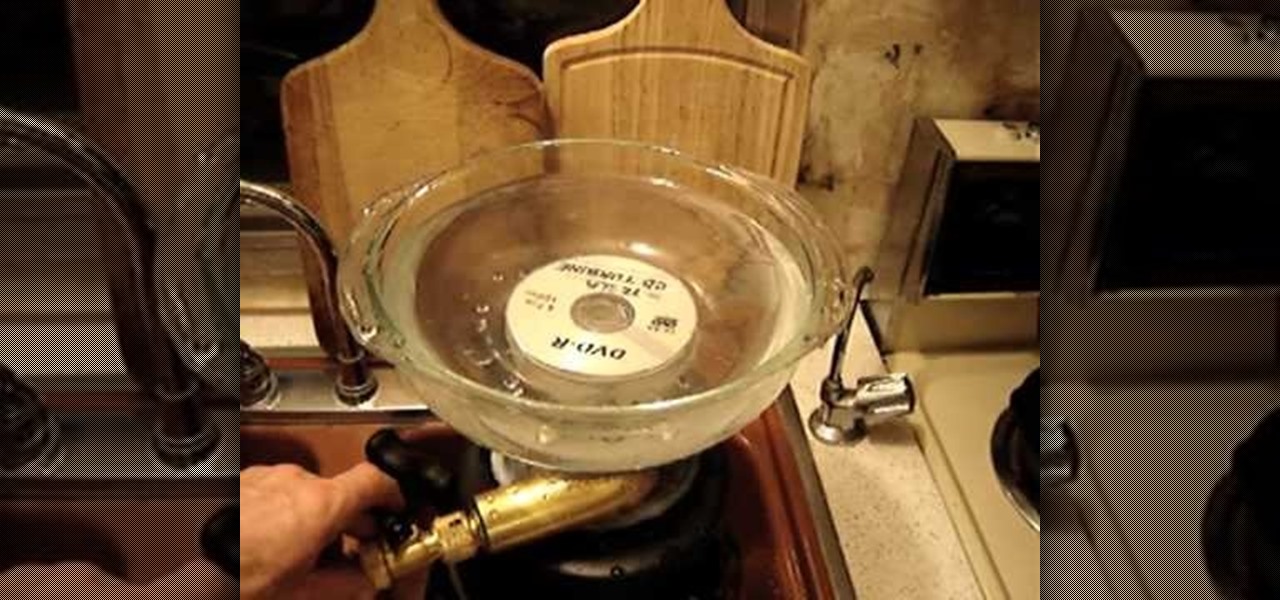
How To: Make a vortex with the Tesla CD turbine
Use the Tesla CD Turbine running off tap water-pressure as an experimental testbed.

How To: Spin salad with a Tesla CD turbine
MrfixitRick demonstrates a magnetically-coupled Salad Spinner run by the Tesla CD Turbine on faucet water pressure.

How To: Light a flashlight up with a Tesla CD turbine
MrfixitRick demonstrates the Shake Flashlight Shaker, as it generates electric power out of faucet water pressure. A Tesla CD Turbine is used to convert the kinetic energy of water into rotation. Then, a connecting rod and magnets charges the built-in battery of the shake flashlight.
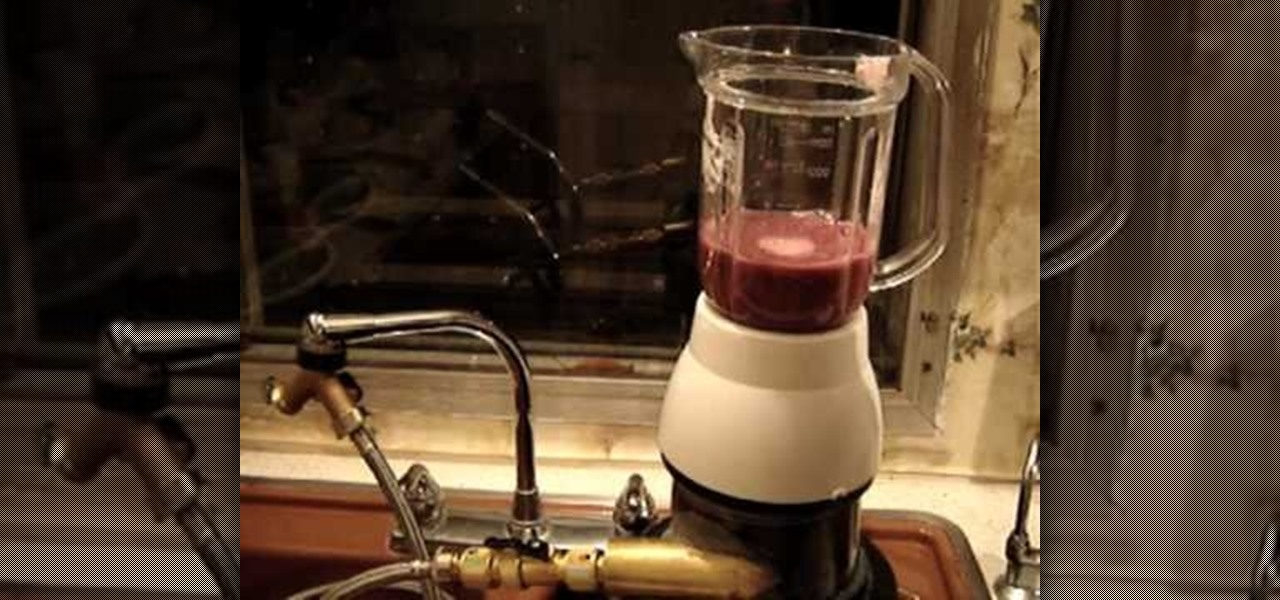
How To: Blend things with a Tesla CD turbine
The Tesla CD Turbine Blender Attachment is a SinkScience test of the new Kitchen Edition of the CD Turbine mated to a recycled blender from the Thrift Store. The CD Turbine, made with recycled CD's and neodymium magnets, is running only on faucet water-pressure power.
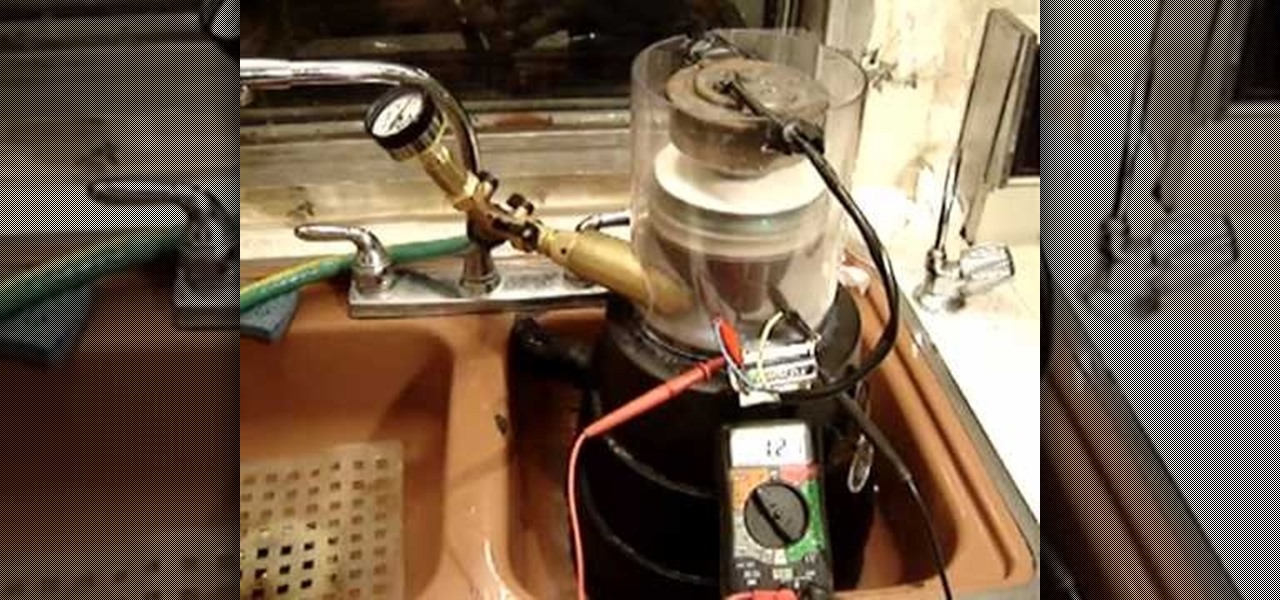
How To: Make hydro-electric power with a Tesla CD turbine
MrfixitRick shows how to make hydro-electric power using faucet water pressure, a Tesla CD Turbine, and a Subaru radiator fan motor.
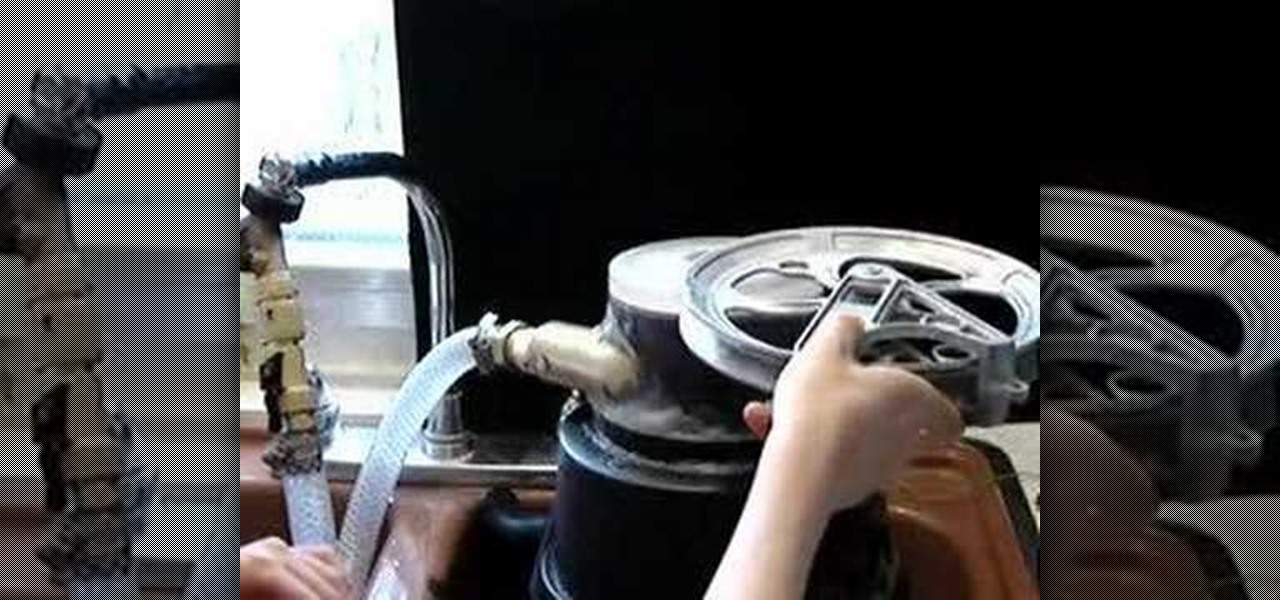
How To: Spin things on a Tesla CD turbine
MrfixitRick and his assistant Rowan try four "Will It Spin?" experiments in an attempt to see if different objects spin with the rotating magnetic field of the Tesla CD Turbine.

How To: Run the Tesla CD turbine with simple CD disc pack
This is the first live action run of the Tesla CD Turbine II with simple hi-speed CD Disc Pack. This particular model of the CD Turbine has no magnets, as well as no shafts, no bearings, no seals and no blades.
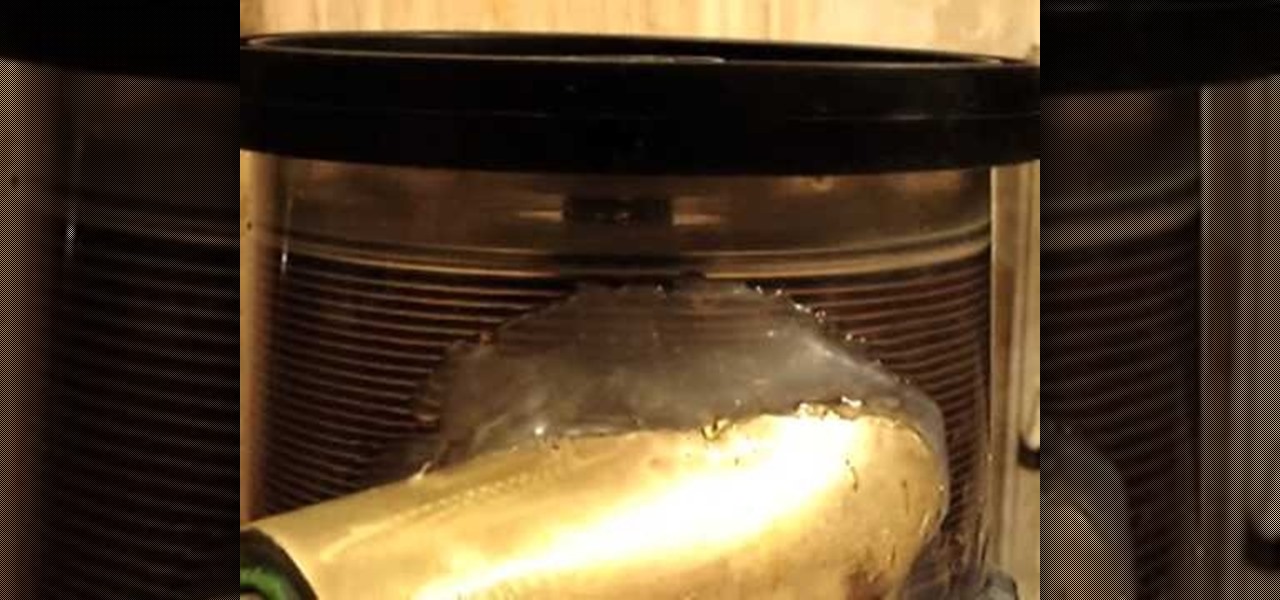
How To: Use an in-sink Tesla CD turbine and magnetic coupler
This is a running demonstration of the water-pressure powered Tesla CD Turbine III and Magnetic Coupler, running smoothly and safely at up to 1000 rpm at the sink. The CD Turbine is made from recycled CD's and neodymium magnets.
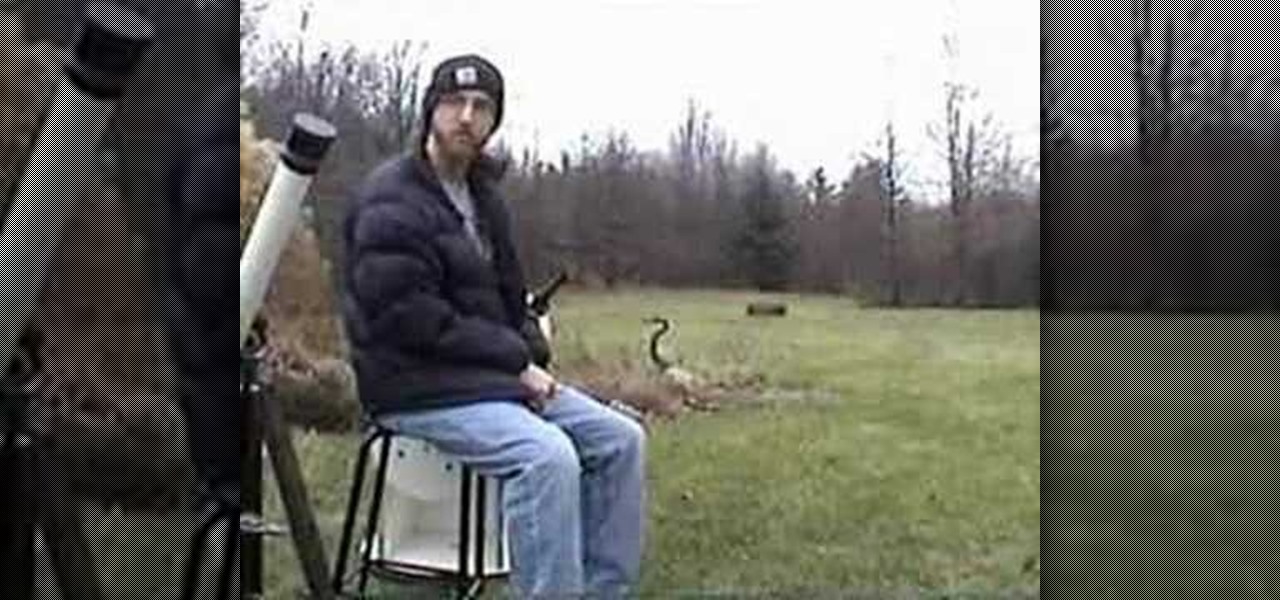
How To: Align the telescopes finderscope with primary optics
See how to align the finderscope with the primary optics in this brief tutorial on your telescope. Watch this Amateur Astronomy for Beginners - Telescope Finderscopes.
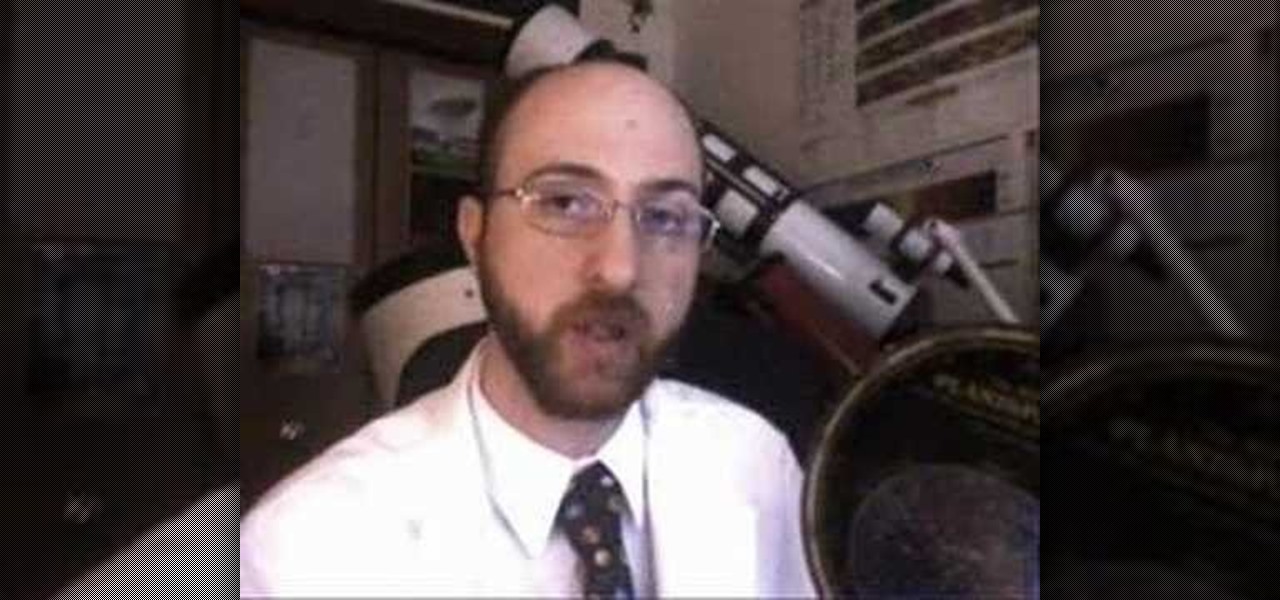
How To: Use a planisphere and binoculars for stargazing
This video gives you some advice for beginning your hobby in amateur astronomy and how to use a planisphere and a pair of binoculars in this Amateur Astronomy for Beginners - Planisphere and Binoculars.
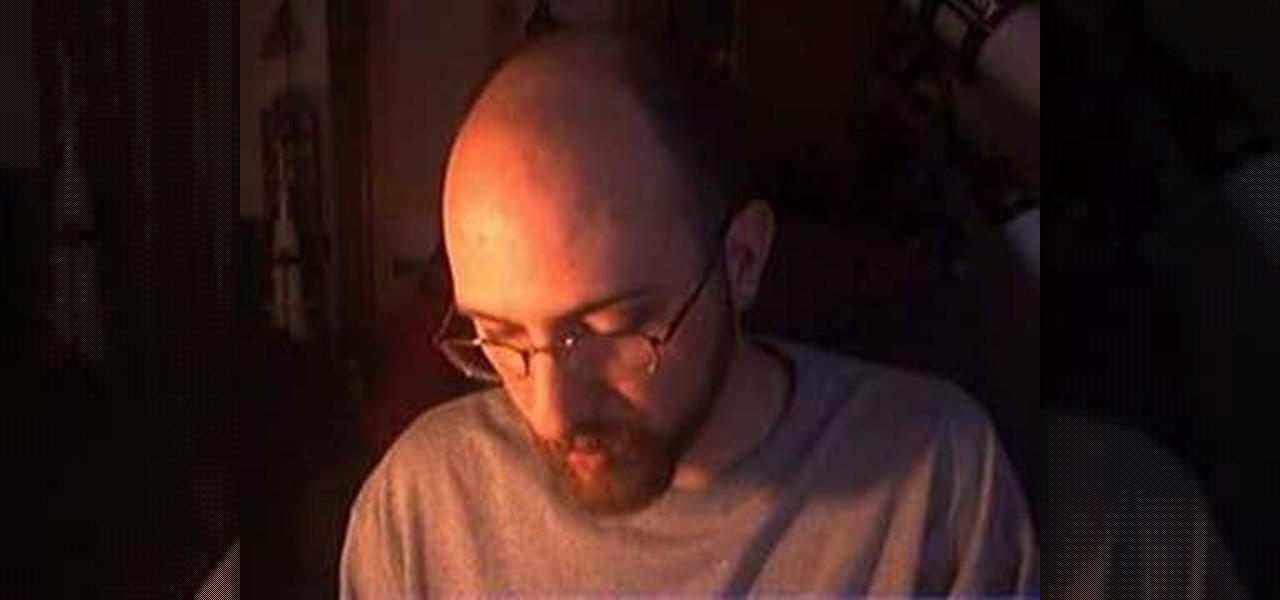
How To: Make an astronomical journal
Keep your stargazing sights and new experiences logged in a journal. Watch Amateur Astronomy for Beginners - The Astronomical Journal.
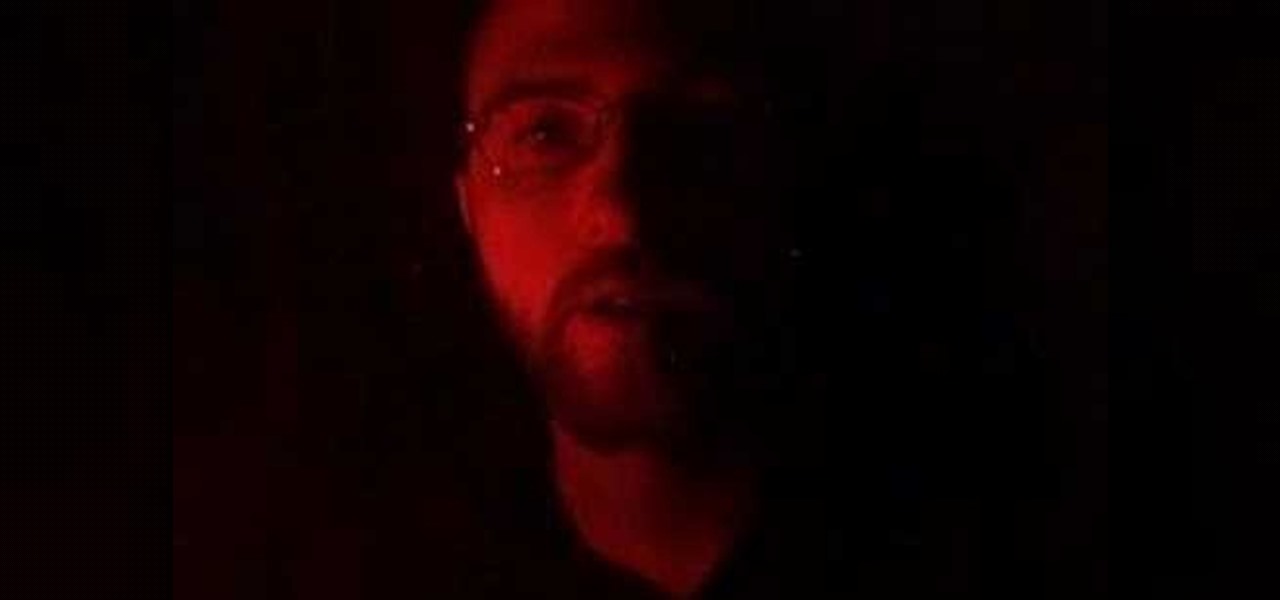
How To: Use red light to preserve night vision when stargazing
Here, you'll see the use of red light to preserve your night vision, in Amateur Astronomy for Beginners - Red Light. Bright lights could make it harder for you to see those stars, so use red light, because the rods in your eyes can take it better.
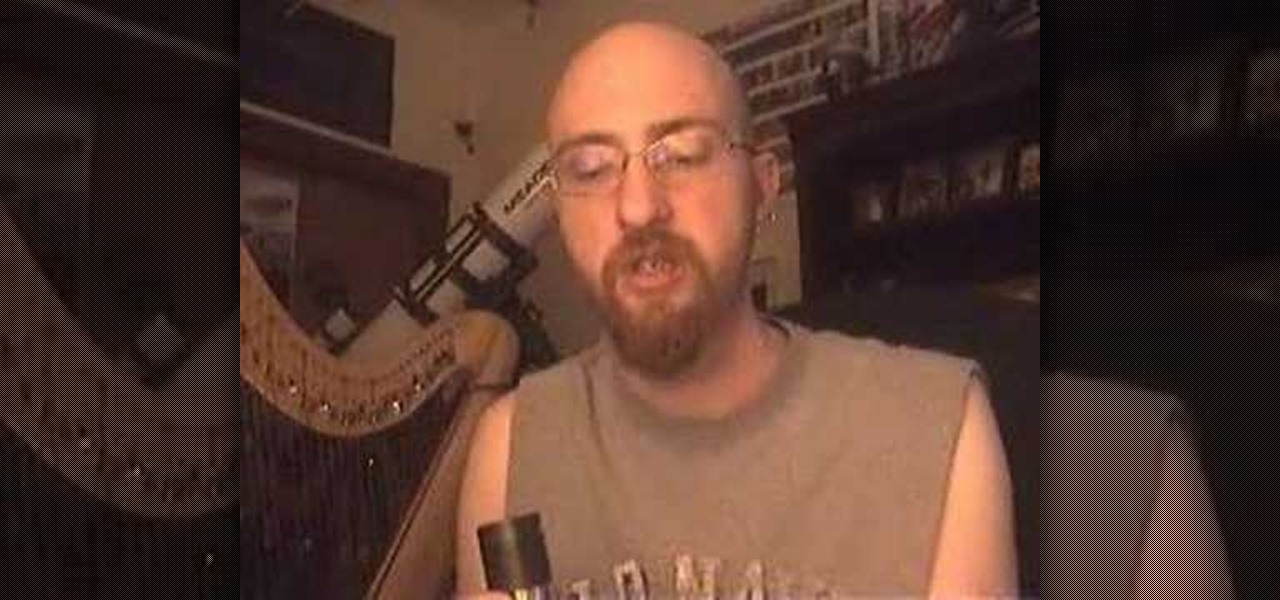
How To: Choose the right eyepiece for your telescope
Learn the basic information on eyepieces for your telescope, so you can gaze at the stars correctly in Amateur Astronomy for Beginners - Eyepieces. Learn the difference between low, medium, and high power eyepieces.
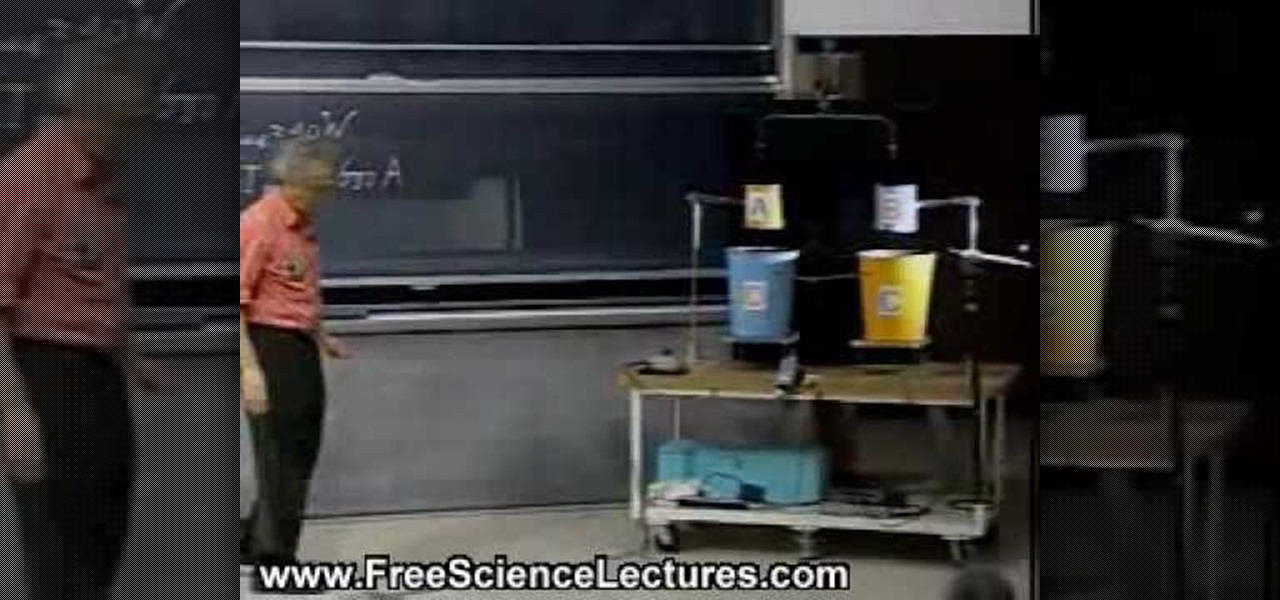
How To: Make a battery out of cans and water with Walter Lewin
The best physics lecturer, Walter Lewin, makes another wonderful physics demonstration after having read a lecture on batteries.
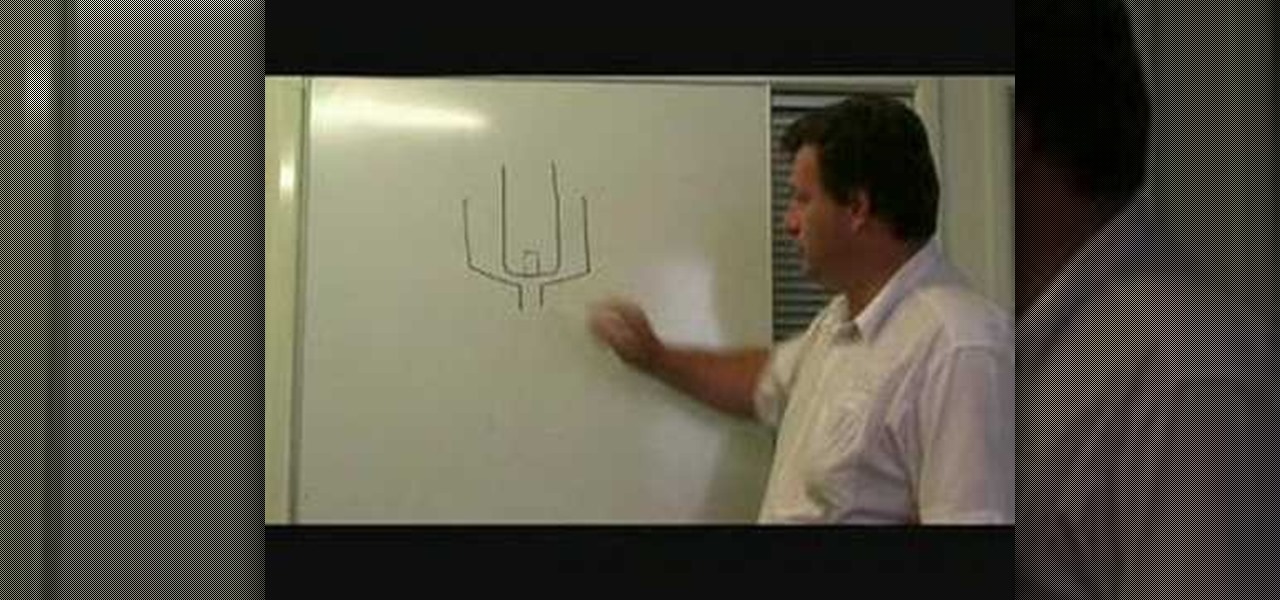
How To: Learn about advanced robotic plasma cutting technology
Here is an educational video for ART (Advanced Robotic Technology) Plasma customers. The HDP Plasma SX Profile Cutter is designed for heavy duty manufacturing environments where power, precision, speed, quality low cost, productivity, and durability are demanded by business owners. See in these sixteen videos how it works, from the inside out, and another video on what it actually is.
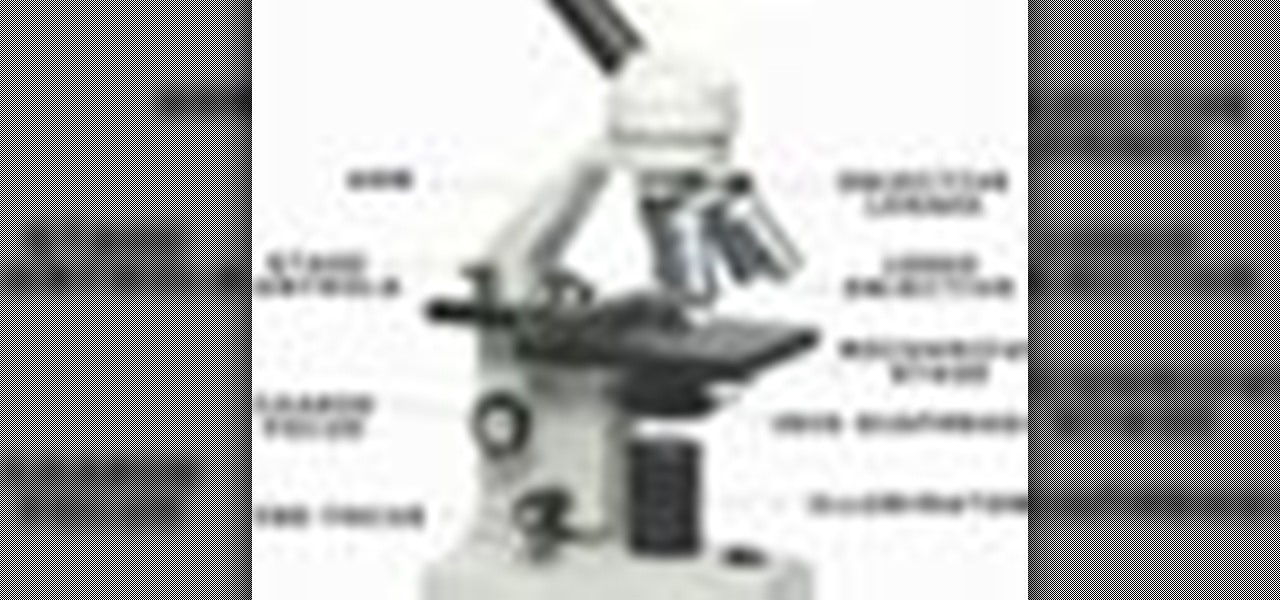
How To: Build your own microscope
Dr. Kiki explores the inner workings of microscopes while our Magic Creator, Moujan Z, remixes empty Altoid cans into a cool and useful container, Sarah makes you a a Muxtape, and Heather goes fencing - all on PopSiren!

How To: Collect meteorites
Astronomy editor David J. Eicher shares treasures from his personal meteorite collection and gives advice on starting your own.
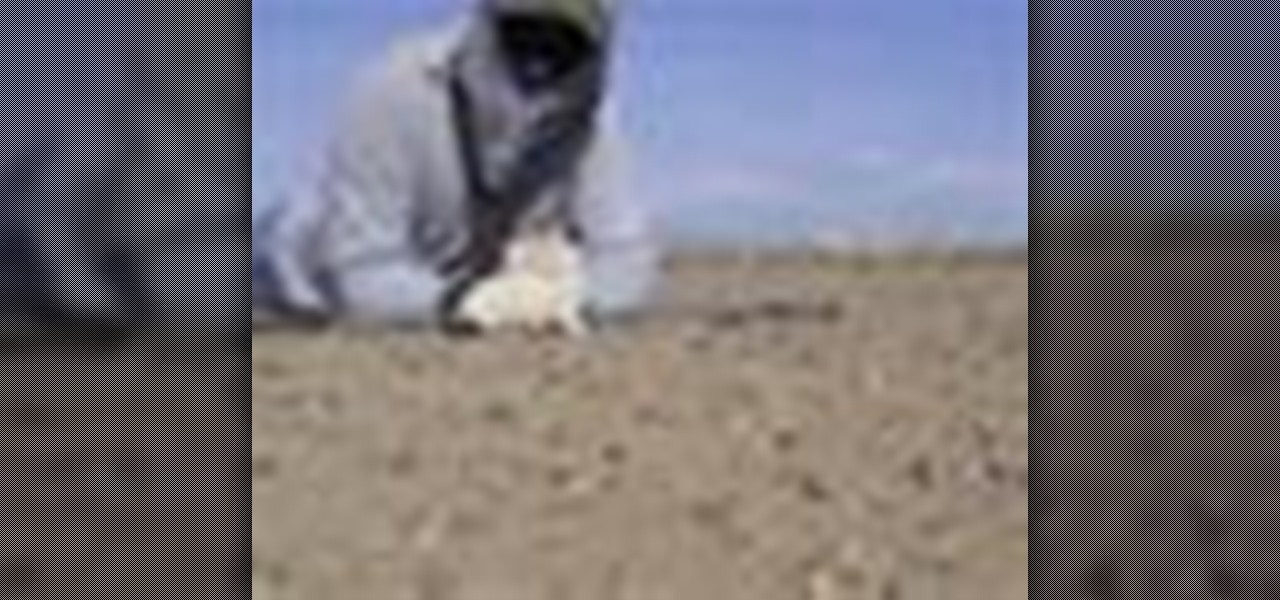
How To: Go meteorite hunting on a dry lake bed
My name is Ruben Garcia and I'm a meteorite hunter. These videos are of a two day meteorite hunt. Just me and my video camera out in the wilderness!
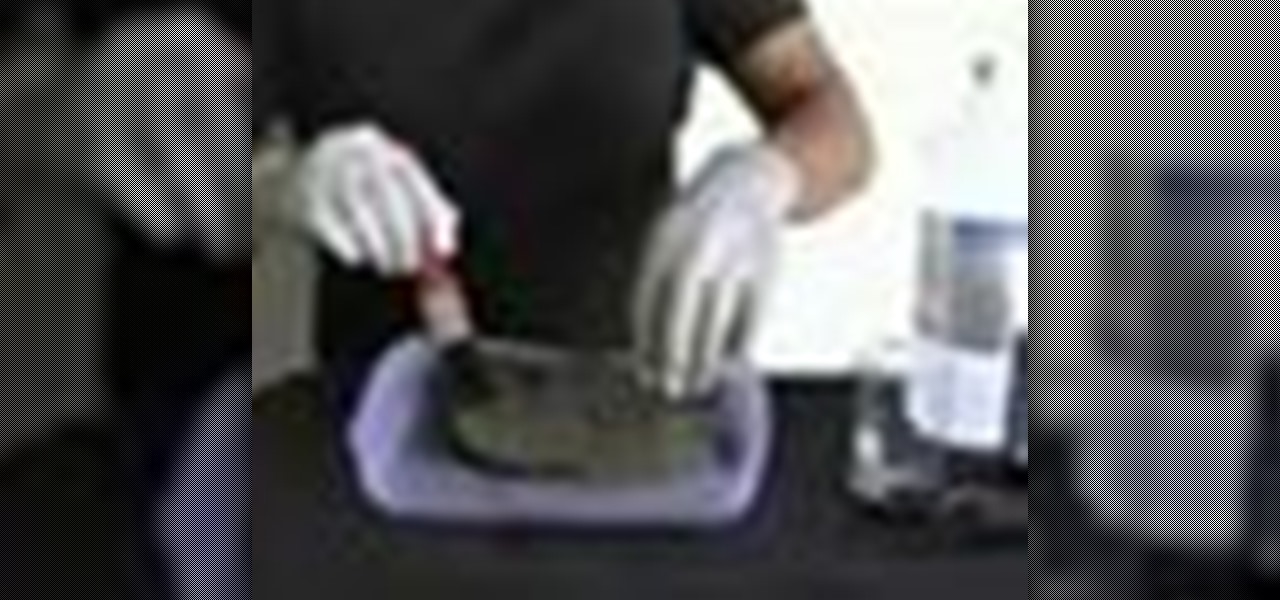
How To: Etch an iron meteorite
Learn how to etch an iron meteorite to reveal its hidden crystalline structure. This guy is specifically etching a Campo Del Cielo meteorite. Why? So you can see how to do it yourself.
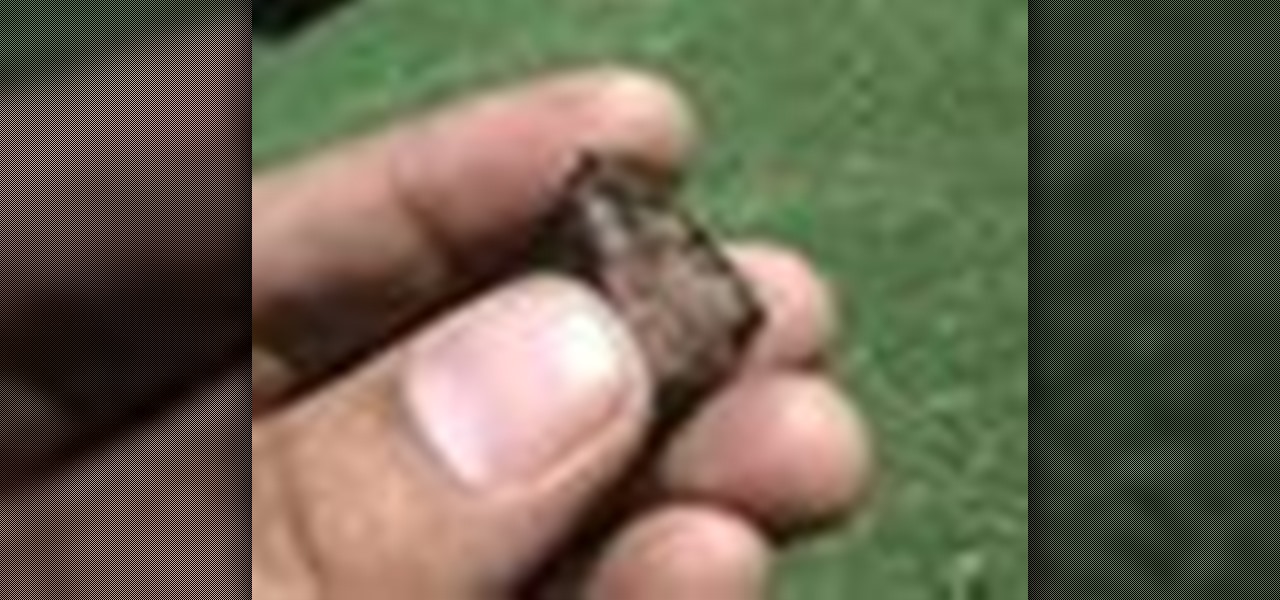
How To: Identify a meteorite from just a crummy rock
Here is a cool show that is all about meteorite identification! These two videos touch on some characteristics of stony (chondrite) meteorites that can help you to positively identify a meteorite.

How To: Read electrical resistor color codes
This video describes Resistor Color Codes and how to read them. It relates Resistor Color Codes to scientific numbers and engineering notation.
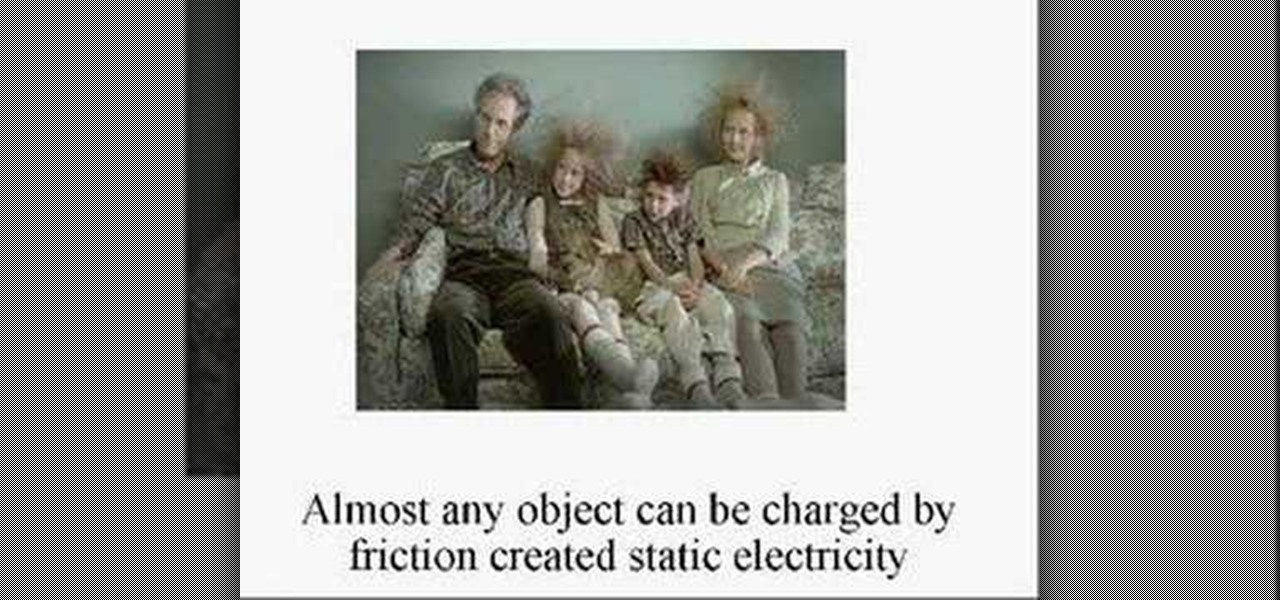
How To: Recognize different voltage sources for electricity
This is a recording of a class lecture on Voltage Sources. The first part describes how mechanical friction can generate voltages.

How To: Be aware of electricity and matter
In the first video, you'll see how contact between different materials can result in attraction or repulsion. Experimental results are discussed that led to Ben Franklin's one fluid theory of electricity. It explains how clues were found from rubbing different materials together.
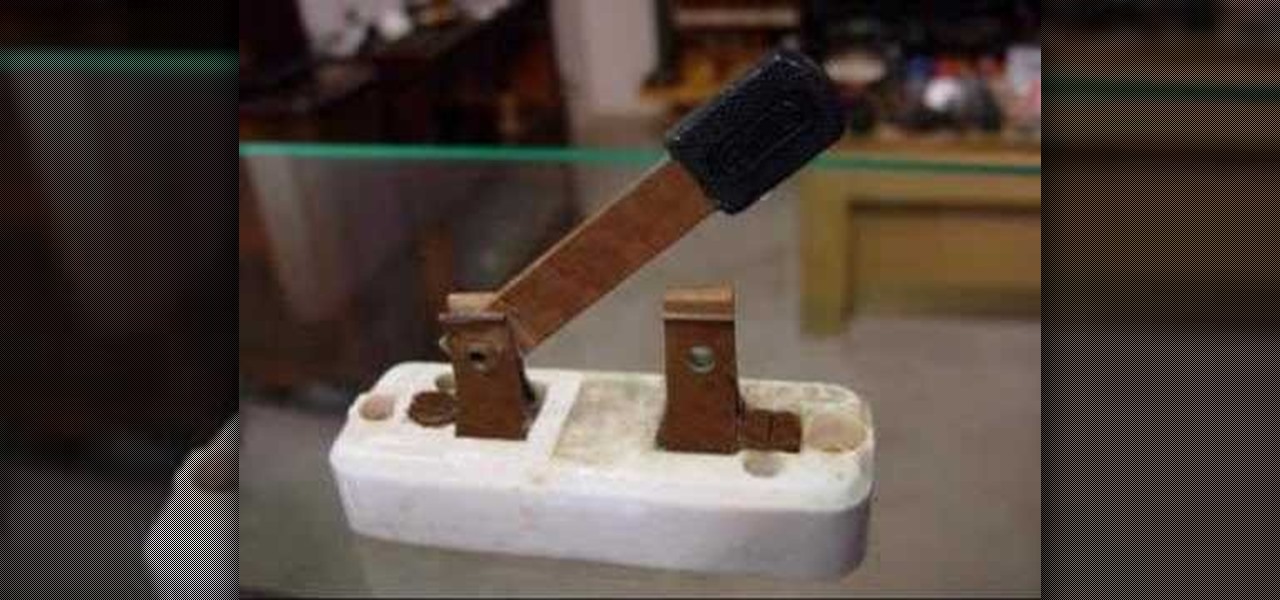
How To: Use switches safely for your electrical needs
In the first video, it introduces the principles and terminology of mechanical electrical switches. It covers terms such as contacts, normally open, normally closed, poles, and throws.
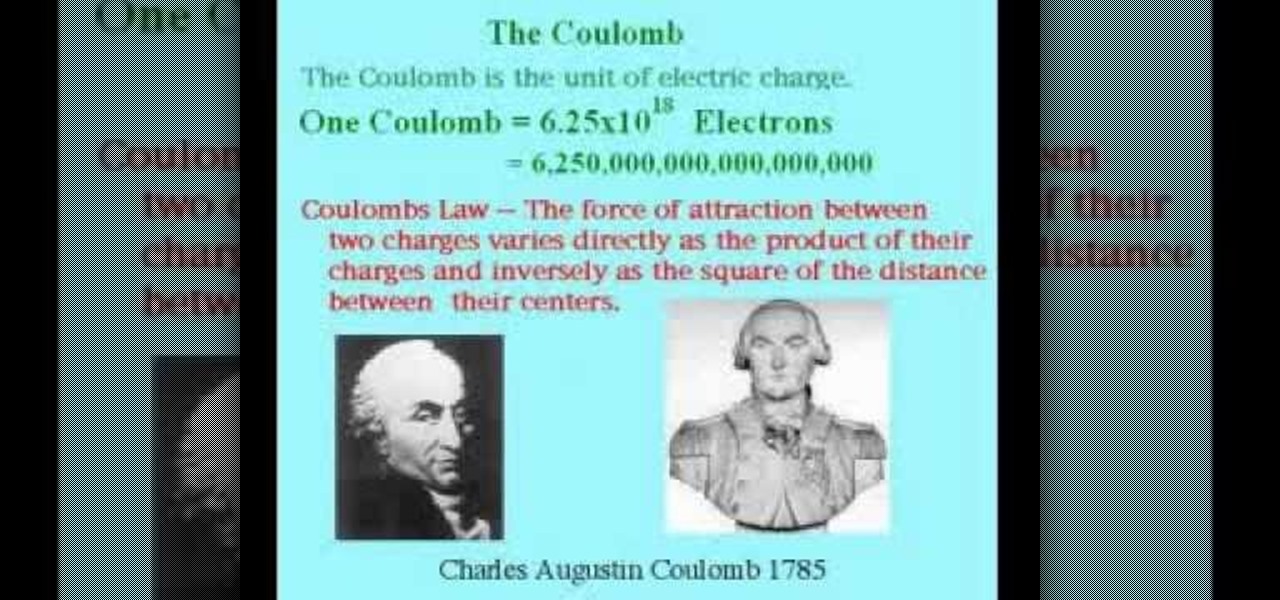
How To: Use Ohm's Law for your electrical needs
The first video introduces the basic electrical quantities of charge, current, voltage, and resistance. The concept of quantities and units is explained. The units of Coulombs, Volts, Amperes, and Ohms are described. The three basic formulas of Ohm's Law (E=IR, I=E/R and R=E/I) are also introduced.
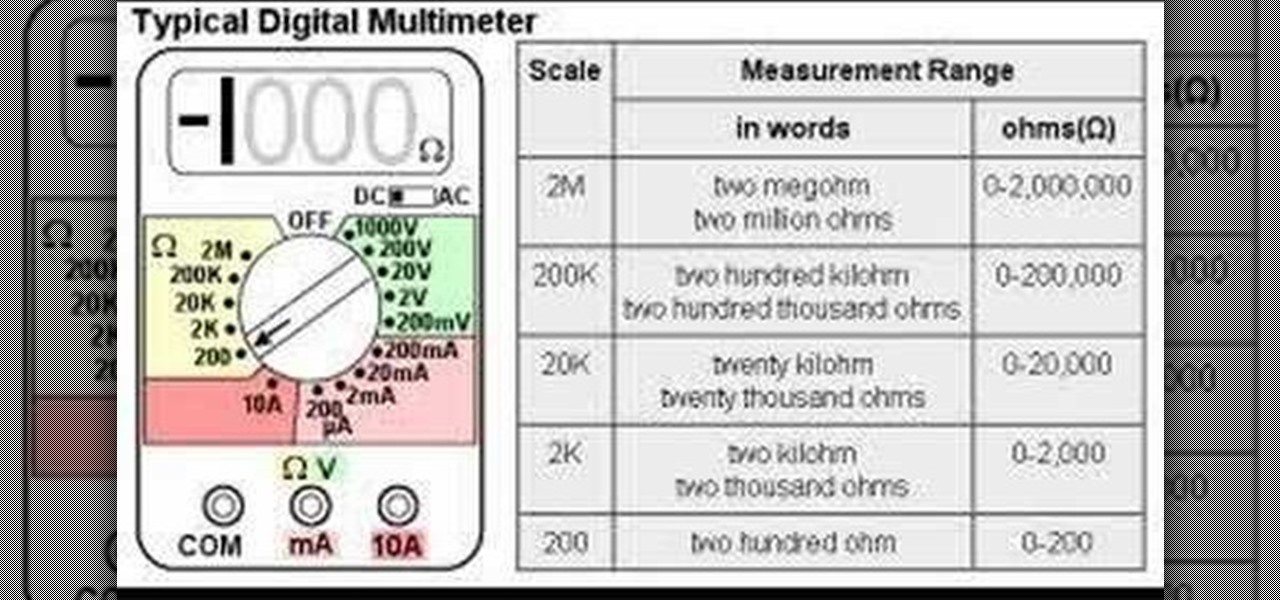
How To: Measure electrical resistance with a multimeter
This is a guided hands-on laboratory activity to help a student understand the proper and safe use of a multimeter to measure electrical resistance. These two video guides the student through the proper techniques for measuring resistance with a multimeter, but you'll need some assorted resistors, a rectifying diode, a photo cell, an electronic labs kit, and some other stuff.
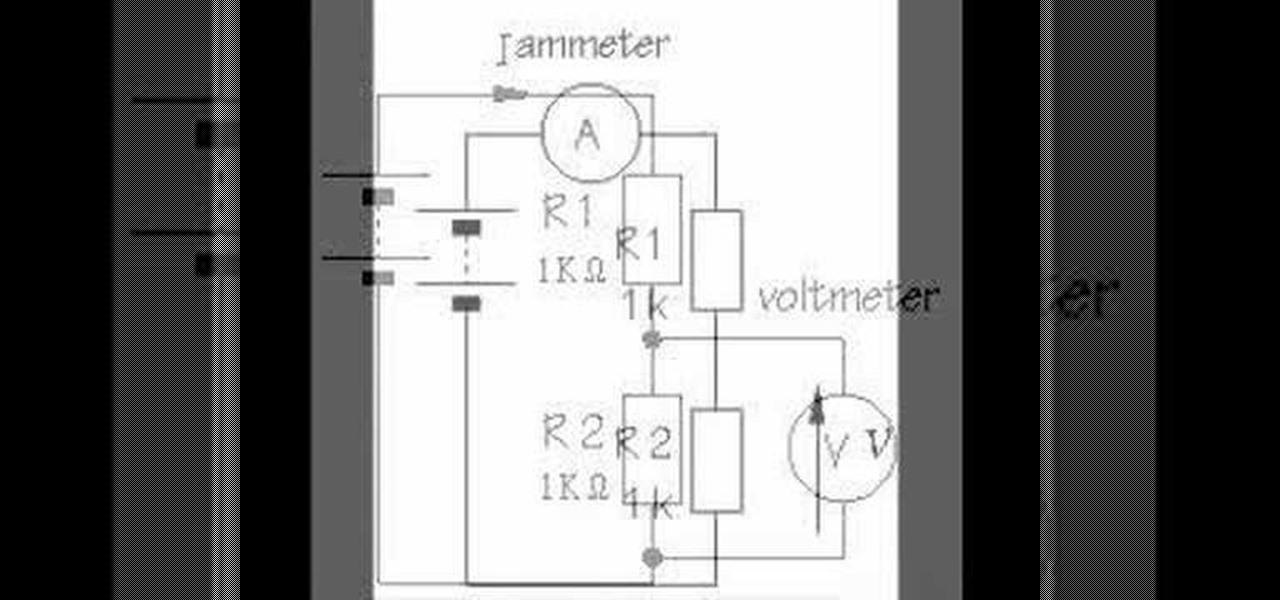
How To: Measure voltage with a multimeter
This is a guided hands-on laboratory activity to help a student understand the proper and safe use of a multimeter to measure voltage using an electronic labs kit. This video guides the student through the proper techniques for measuring voltage with a multimeter.

How To: Measure current with a multimeter
This guided hands-on laboratory activity to help a student understand the proper and safe use of a multimeter to measure current using an electronic labs kit. This video guides the student through the proper techniques for measuring current with a multimeter.

How To: Use voltage and current
This two-part video describes voltage, the potential difference or "pressure" that pushes electric charges through conductors. After watching this, you'll know everything there is to know about voltage and current.
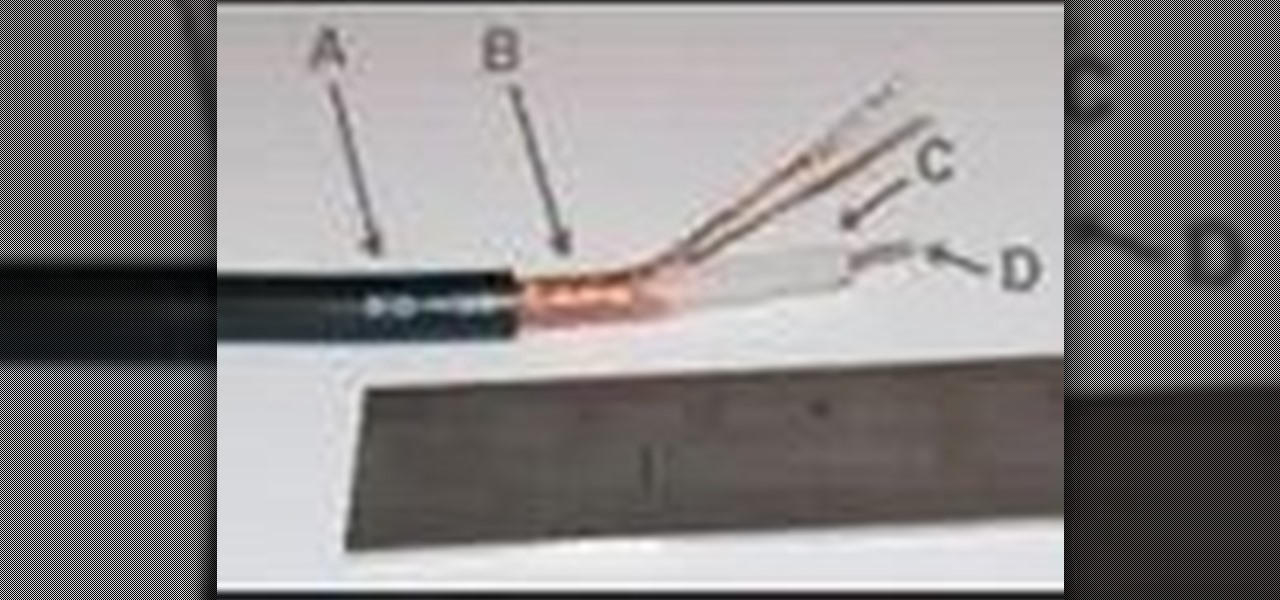
How To: Use the right electrical wires
This video is about electrical wires. It describes common types, configurations of wire, and wire terminology. It explain the gauge system of rating wire size (diameter), circular mils, current capacity, and others.
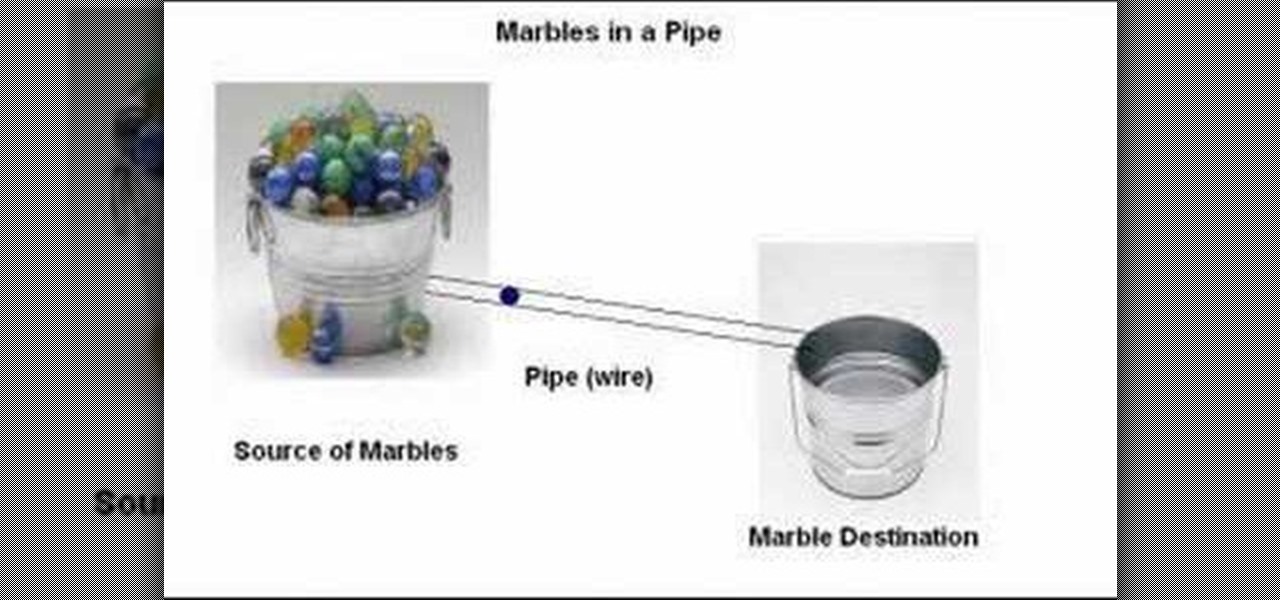
How To: Make electrical circuits
This video introduces the concept of an electric circuit and how electrons flow through the wire. It describes the difference between an open and closed circuit, and the importance of continuity.
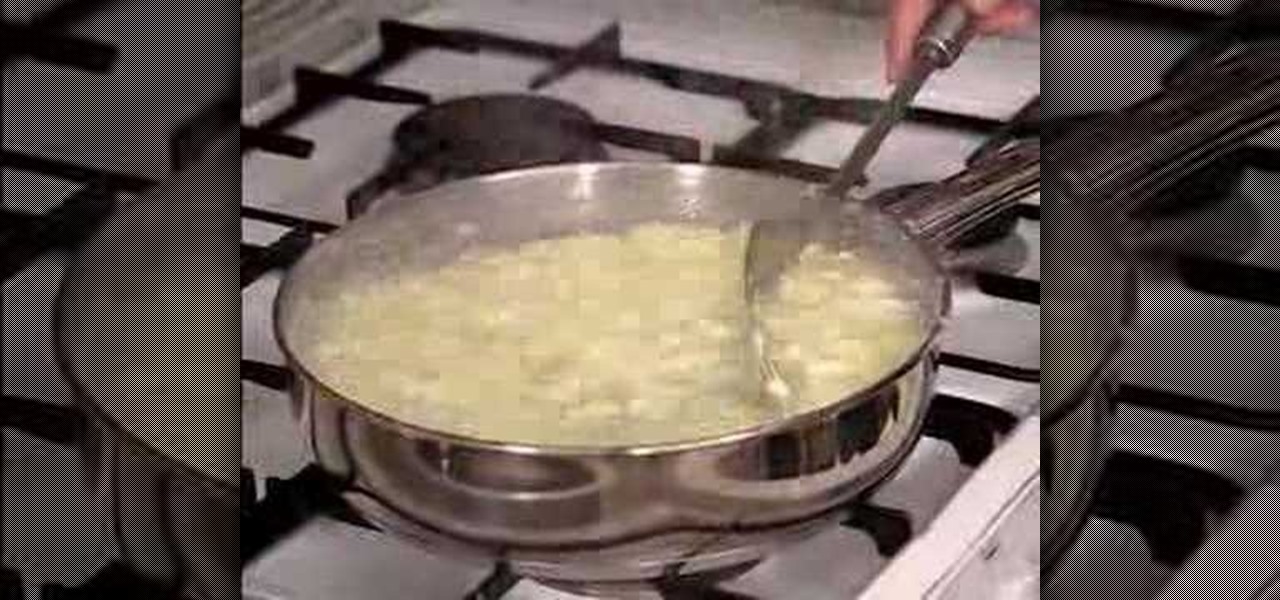
How To: Make polymers in the kitchen
Caroline and Val from New Scientist make plastic from milk and vinegar. Sure it likes like food at first, but leave it for a couple days, and it will be plastic. Just try it for yourself.
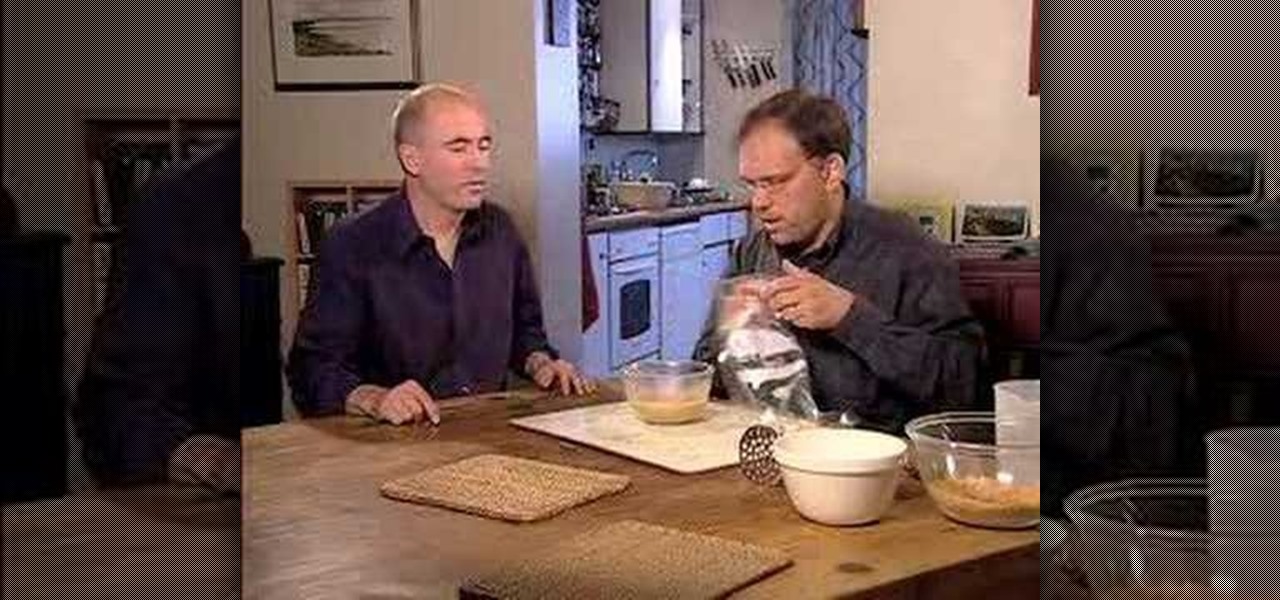
How To: Extract the iron from your cereal
Ivan and Mick from New Scientist show us how to get the iron out of fortified breakfast cereal. You won't believe how much you can find!
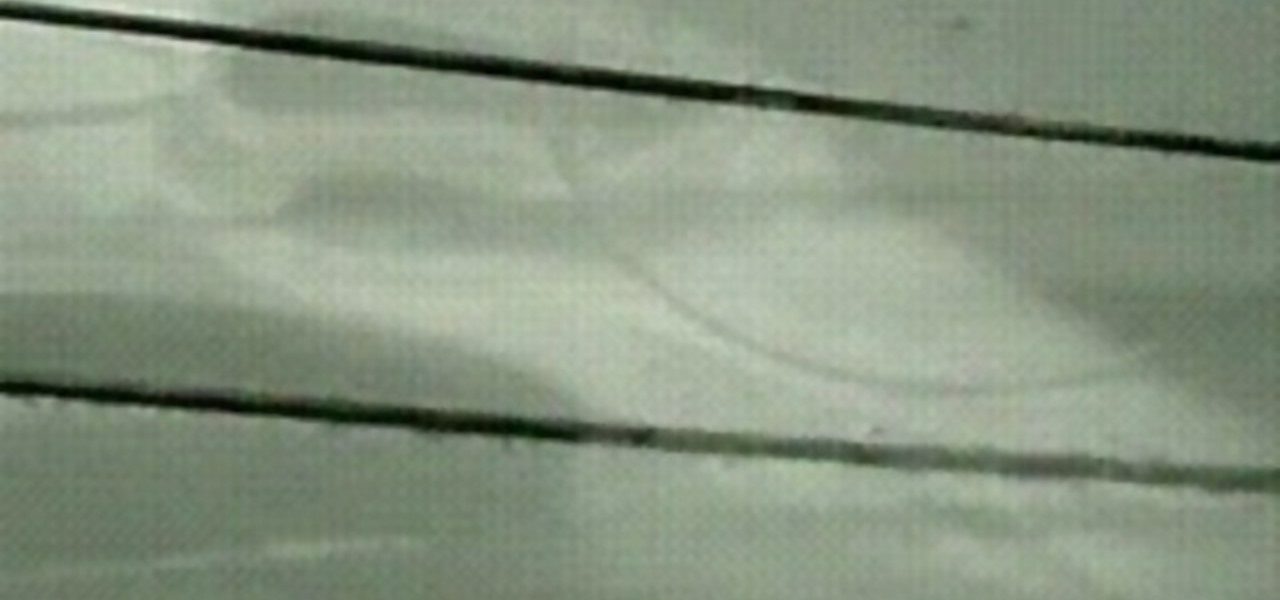
How To: Perform electrolysis with pencil lead
See how to do electrolysis of water with graphite (lead from a pencil). The positive side has oxygen bubble, and the negative side has hydrogen bubble. Just get a 9V dry cell battery.
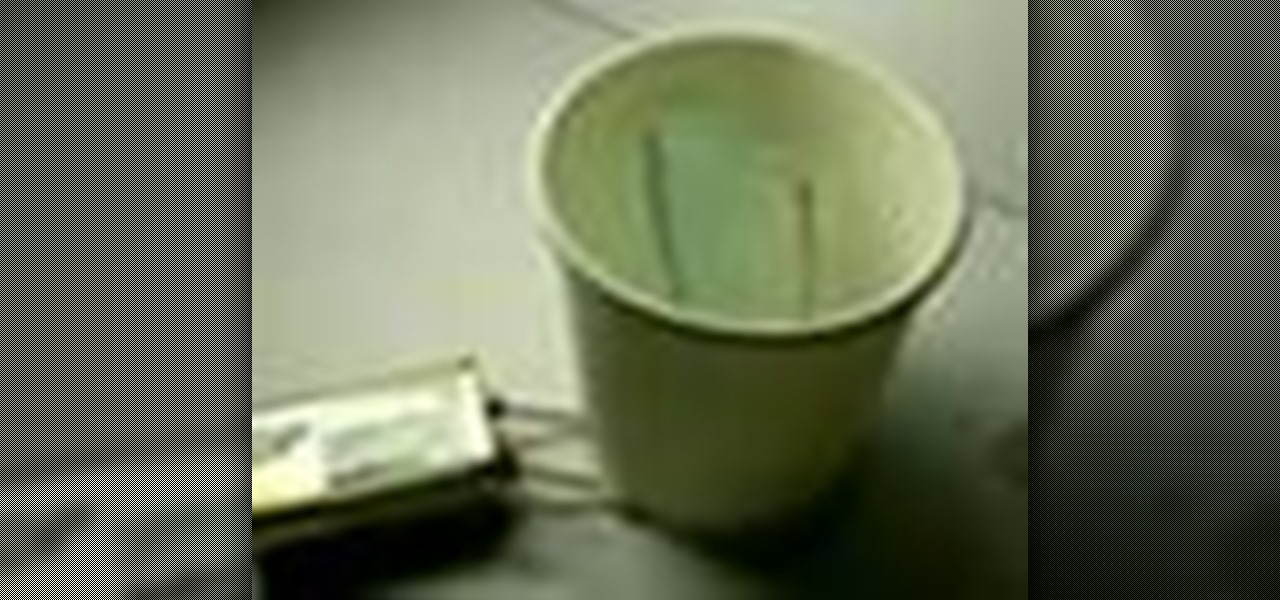
How To: Perform electrolysis, the cool way
See the electrolysis of water (baking soda dissolved) with copper wire. The negative side has hydrogen bubble, and the positive side has oxygen bubble. Watch the positive side as the water turns blue.
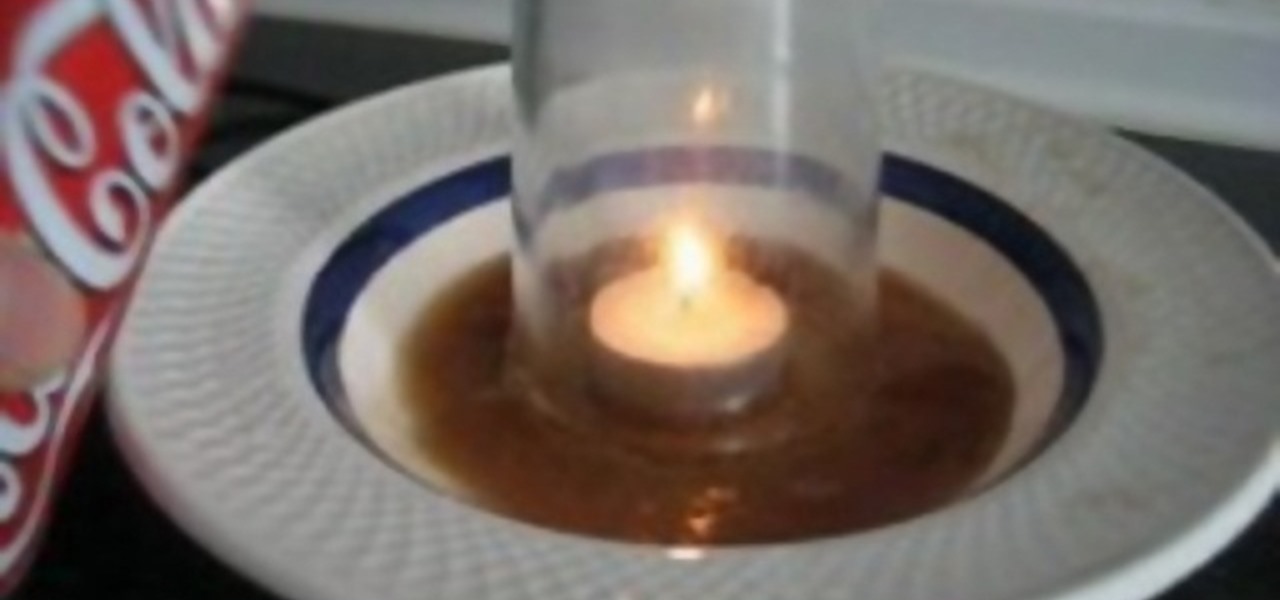
How To: Get liquid from a bowl into a glass with just a candle
This is an amazing, scientific, rise effect with just a candle, a cup, and a Coke. Anybody can do it, so why not?



